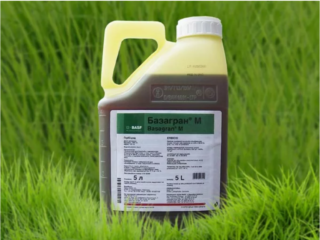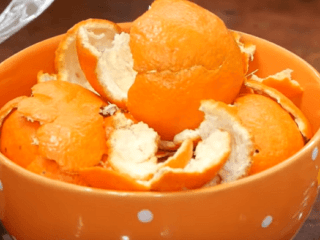Content
- 1 Is it possible to feed tomato seedlings with hydrogen peroxide?
- 2 Advantages and disadvantages
- 3 How and when to water tomatoes with hydrogen peroxide
- 4 Treatment against diseases and pests
- 5 Contraindications to watering with hydrogen peroxide
- 6 Precautionary measures
- 7 Conclusion
- 8 Reviews on the use of hydrogen peroxide for tomato seedlings
To grow a good harvest of tomatoes, it is necessary to provide proper care for the seedlings, including timely feeding. This will allow the seedlings to grow stronger and fully develop. Agricultural technology for growing tomatoes includes the use of special preparations. However, many gardeners are confident that feeding tomato seedlings with hydrogen peroxide stimulates growth and protects them from the negative effects of pests and diseases. It’s worth looking into how true this is.

Peroxide is a popular medicine
Is it possible to feed tomato seedlings with hydrogen peroxide?
The drug is a natural insecticide and fungicide for plants. This is due to its antiseptic and antibacterial properties. Therefore, this product can and should be used to feed seedlings and adult tomato bushes in order to protect them from diseases, as well as strengthen the immune system to resist pests.
In addition, the drug is a chemical compound of oxygen and hydrogen. Therefore, when watering nightshade crops, it nourishes the soil, loosens it and acts like rainwater saturated with ozone after rain. This stimulates the growth of tomatoes after the use of hydrogen peroxide, since the nutritional components are converted into an accessible form, and the root system begins to develop in drained soil and absorb them in the required volume.
Advantages and disadvantages
Feeding seedlings and adult tomato bushes with hydrogen peroxide has its advantages and disadvantages. Before using the preparation for watering and processing tomatoes, you need to familiarize yourself with them in advance in order to eliminate possible risks for the future harvest.

Hydrogen peroxide is a clear, odorless liquid
The main advantages of feeding seedlings and adult bushes with the drug:
- participates in redox processes;
- increases the viability of tomatoes;
- improves the absorption of nutrients by the plant;
- stimulates the growth of the root system;
- suppresses the activity of pathogenic microflora;
- disinfects the soil;
- accelerates flowering and fruiting;
- strengthens the culture's resistance to unfavorable external factors;
- provides a high level of soil aeration.
Flaws:
- It is effective only if the recommended periods of application are observed;
- with frequent use, it kills not only harmful, but also beneficial soil microflora;
- slows down the healing of open plant wounds.
How and when to water tomatoes with hydrogen peroxide
You can use the drug to feed tomato seedlings several times a season. But this must be done at a certain stage of seedling growth, since only in this case the drug will bring maximum benefit.
Watering tomato seedlings with hydrogen peroxide
When using the seedling method of growing tomatoes, you need to water the seedlings with hydrogen peroxide for the purpose of feeding three times before planting and after transplanting the seedlings to a permanent place. To do this, you need to prepare a nutrient solution at the rate of 30 ml of product per 1 liter of settled water at room temperature. Moisturizing is carried out directly under the root in the evening.
Stages of feeding tomatoes at the stage of growing seedlings:
- The first procedure is recommended two weeks after germination. In this case, feeding seedlings activates growth processes and promotes the development of not only the above-ground part, but also the root system.
- It is necessary to fertilize tomato seedlings a second time a week after the previous procedure. At this stage, fertilizing makes it possible to increase the resistance of plants to blackleg and strengthen vitality for further development.
- It is necessary to water the tomatoes a third time after planting the seedlings in a permanent place in open ground or a greenhouse. If you feed tomato seedlings with hydrogen peroxide at this time, the plants will adapt much faster to new conditions and form strong bushes.

After feeding, the seedlings become a rich green hue, and their legs thicken
Watering mature plants
This product also benefits adult tomato bushes.In this case, it is necessary to use it to feed plants once every two weeks. More frequent use of peroxide for watering tomatoes can lead to the opposite effect.
Feeding should be done in the evening. To do this, it is recommended to use a nutrient solution at the rate of 50 ml of product per 10 liters of water. Watering is carried out directly under the root of the bush. The recommended consumption rate when fertilizing is 1 liter per plant.
Treatment against diseases and pests
Peroxide is also an effective remedy against diseases and pests. However, it is worth understanding that this drug can only be used to prevent infection. With the massive spread of pathogenic microflora and pests, hydrogen peroxide is useless.
Directions for use:
- From late blight. Prepare 10 liters of settled water at a temperature of +20-22 °C. Add 10 tbsp to it. l. peroxide and 40 drops of iodine. Stir the solution until smooth. Use for spraying bushes and the top layer of soil around them. Repeat the procedure every week.
- From Alternaria. It is necessary to add 100 ml of peroxide per 10 liters of water and 10 g of potassium phosphate. Stir the solution until a uniform composition is obtained. Use it for spraying bushes at intervals of one week.
- Against white spotting. To combat this disease, hydrogen peroxide is recommended to be used together with copper sulfate or Bordeaux mixture. In this case, 5 tbsp must be added to the prepared solution of the drug. l. products and mix well. Repeat spraying every ten days.
- From aphids, cutworms, whiteflies. To repel pests, it is necessary to use a multicomponent solution. In this case, to 1 liter of settled water you need to add 10 ml of ammonia, 1 tbsp. l. peroxide and 30 g of grated laundry soap. Mix the solution well until a homogeneous composition is obtained and spray it on the top and back sides of the tomato leaves. Repeat the procedure every week.

It is recommended to treat tomatoes against diseases and pests in the morning or evening.
Contraindications to watering with hydrogen peroxide
This product is safe for plants regardless of their stage of development. Therefore, it can be used throughout the season. But there is still one contraindication - the presence of mold on the surface of the soil around the tomatoes.
In this case, it is necessary to stop watering the plants and spray the leaves with the addition of hydrogen peroxide, and also loosen the soil at the base of the bushes. If after this the mold does not disappear, then the use of tomatoes for feeding should be abandoned.
Precautionary measures
This product is a chemical compound, so you need to work with it carefully and follow safety precautions. Before using hydrogen peroxide to water or process tomatoes, you should wear gloves, clothing that covers your skin as much as possible, and goggles.
Working with the product at air temperatures above +30 °C is prohibited. This is due to the fact that when hydrogen peroxide evaporates, it irritates the mucous membranes of the mouth and nose and causes sneezing and coughing. Also, do not allow the product to get into your eyes, as this can cause a burn to the cornea. If this does happen, you must immediately rinse them with clean water.
It is impossible to prepare a solution for feeding tomatoes in a metal bucket, as this may cause autocatalytic decomposition, accompanied by an explosion. After working with the product, it is recommended to take a shower and wash clothes.

You can fertilize many vegetable and garden crops with the product.
Conclusion
Feeding tomato seedlings with hydrogen peroxide gives good results only if done correctly. Therefore, you should not ignore the recommendations, since not only the volume of the future harvest, but also the viability of the bushes directly depends on this. After all, as you know, you need to observe moderation in everything, and hydrogen peroxide is no exception.
Reviews on the use of hydrogen peroxide for tomato seedlings







